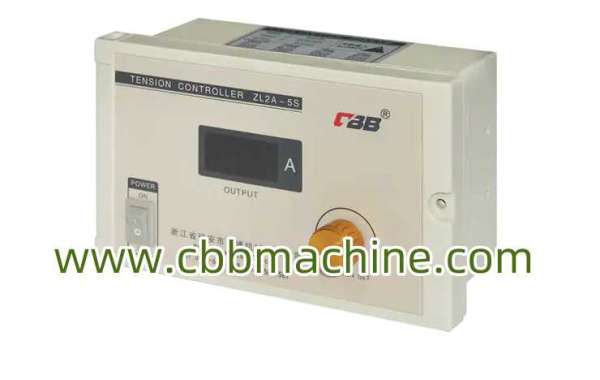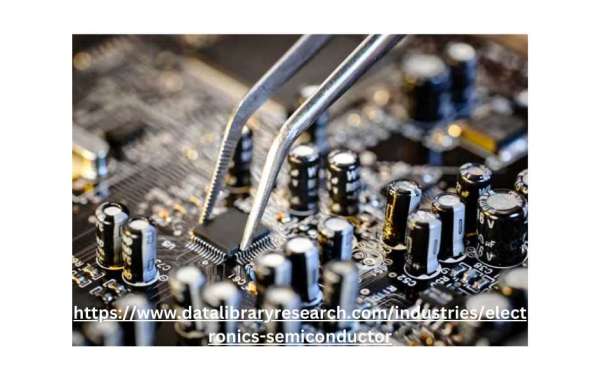Optimizing Industrial Performance with Magnetic Powder Brakes
In the fast-paced world of industrial manufacturing, precision and reliability are key to maintaining operational efficiency. Whether you're dealing with high-speed packaging systems, winding machinery, or any other heavy-duty equipment, the ability to control speed and torque precisely can make a significant difference in product quality and equipment lifespan. One of the most effective ways to achieve this level of control is through the use of Magnetic Powder Brakes.
These advanced braking systems are designed to provide smooth, reliable control over machine speed and torque, making them indispensable in many industrial applications. In this blog, we'll dive into how Magnetic Powder Brakes work, their key benefits, and why they are an essential component for improving manufacturing operations.
Understanding the Magnetic Powder Brake
A Magnetic Powder Brake is an electromagnetic device used to regulate the speed and torque of rotating machinery. Unlike traditional friction-based braking systems, which involve physical contact between parts, Magnetic Powder Brakes rely on a non-contact braking mechanism. The brake uses a fine powder suspended between a rotor and a stator. When an electrical current is passed through the stator, it generates a magnetic field that causes the powder to form a chain-like structure, which creates resistance against the rotor.
This method of controlling braking force allows for smooth, precise adjustments to the torque without physical wear between the parts, making it ideal for applications where consistent and accurate speed regulation is crucial.
Key Benefits of Magnetic Powder Brakes
1. Precise Torque and Speed Control
One of the most important benefits of Magnetic Powder Brakes is their ability to provide precise control over torque and speed. Whether you're working with high-speed printing presses, packaging lines, or winding systems, the ability to regulate the speed of machinery in real-time is essential to maintaining optimal performance. The Magnetic Powder Brake allows operators to fine-tune the braking force by adjusting the electric current, providing unparalleled accuracy in controlling the machinery's speed.
2. Non-Contact Braking for Reduced Wear and Tear
Traditional braking systems rely on friction between components, which inevitably leads to wear and tear over time. This results in increased maintenance costs, longer downtime, and more frequent repairs. The Magnetic Powder Brake, however, operates without direct physical contact between the rotor and stator. This non-contact braking mechanism significantly reduces the risk of component wear, extending the life of both the brake and the machinery it controls. With less maintenance required, companies can reduce downtime and improve operational efficiency.
3. Smooth, Gradual Braking for Higher Product Quality
Abrupt stops or jerky decelerations can negatively affect product quality, especially when dealing with sensitive materials. For example, in packaging lines, high-speed printing presses, or textile production, even a small misstep can lead to defects in the final product. Magnetic Powder Brakes offer smooth, gradual braking, which prevents these sudden jolts and ensures a more consistent and controlled operation. This level of precision not only improves the quality of the end product but also reduces material wastage and production errors.
4. Lower Maintenance Costs and Increased Equipment Lifespan
The non-contact nature of Magnetic Powder Brakes translates into fewer wear-related issues. This leads to significant savings in maintenance costs, as components last longer and require less frequent replacements. Furthermore, because the brake generates little heat due to its frictionless operation, it is less likely to overheat or suffer from wear-induced failures. For industries that rely on 24/7 operations, such as packaging or manufacturing lines, this enhanced reliability can make a substantial difference in overall production uptime.
5. High-Speed Performance
In high-speed industrial operations, it is crucial to maintain control over both speed and torque without compromising efficiency. Magnetic Powder Brakes are well-suited for high-speed applications, providing reliable torque control even in fast-moving machines. They are commonly used in systems such as printing presses, unwinding and winding machines, and conveyors where the machinery operates at high speeds. The ability to maintain a consistent braking force at such speeds ensures the machinery operates smoothly and that the production process remains uninterrupted.
Applications of Magnetic Powder Brakes
Due to their versatility and precision, Magnetic Powder Brakes are used in a wide range of industrial applications. Here are some common industries where they are essential:
1. Textile Manufacturing
In the textile industry, winding and unwinding systems play a vital role in ensuring that materials like fabric, yarn, or thread are processed correctly. Maintaining proper tension during these processes is crucial to avoid material damage. Magnetic Powder Brakes are used to regulate the torque and tension in these systems, preventing the materials from becoming too tight or too loose. This ensures consistent material handling and minimizes waste.
2. Packaging Systems
Packaging lines rely on conveyors, feeders, and sealing machines that must run at consistent speeds to ensure that products are packed efficiently and accurately. By using Magnetic Powder Brakes in packaging equipment, manufacturers can control the speed of these machines with high precision, reducing the likelihood of product misalignment, jams, or other operational disruptions.
3. Printing Presses
In the printing industry, paper must be fed through machines at a consistent speed and tension to avoid misalignment, jams, or wrinkles in the printed material. Magnetic Powder Brakes are employed to regulate the tension and speed of the paper, ensuring smooth and uniform printing. This helps to achieve high-quality prints with minimal errors, which is especially important in high-volume printing operations.
4. Conveyor Systems
Conveyor systems are often used in a variety of industrial settings to transport materials across a production line. These systems need to maintain a consistent speed to ensure smooth operations. Magnetic Powder Brakes can be used to control the speed of conveyor belts, preventing sudden jerks or uneven movement, which could lead to damaged materials or disrupted production processes.
Conclusion
Magnetic Powder Brakes offer a cutting-edge solution for industries that require precise control over speed and torque. With their non-contact operation, these brakes provide smooth, reliable performance while reducing wear, improving product quality, and lowering maintenance costs. Whether used in packaging, textile manufacturing, printing, or conveyor systems, Magnetic Powder Brakes are an invaluable tool for optimizing industrial performance.
By incorporating Magnetic Powder Brakes into your machinery, you can significantly enhance the reliability, precision, and longevity of your equipment, leading to more efficient and cost-effective operations.






